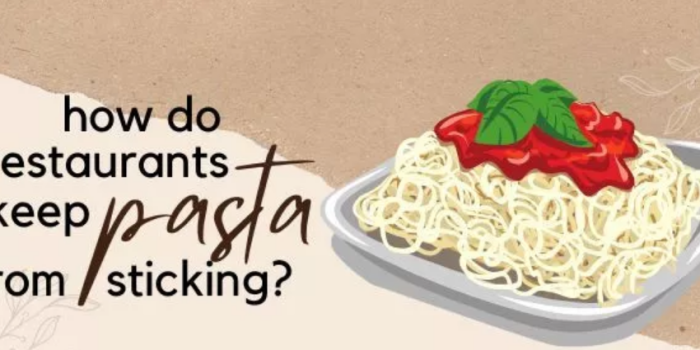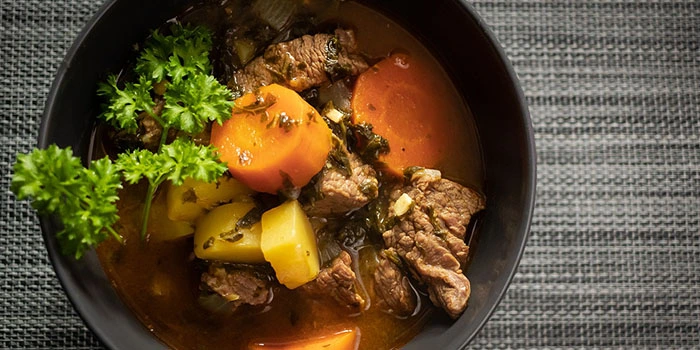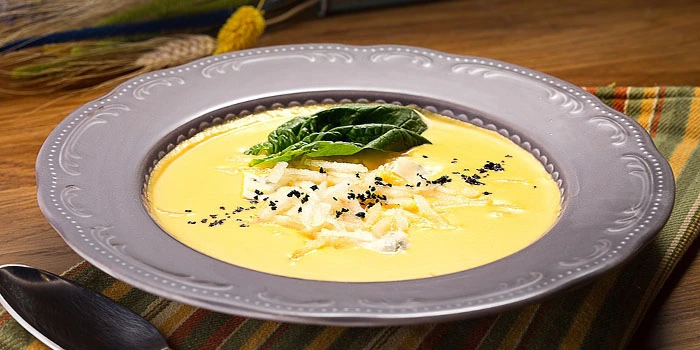Even those who do not have excellent culinary talents will cope with the process of making pasta. After all, it is enough to throw them into the water and wait for the end of cooking. However, the question often arises, how to keep pasta from sticking together?
Basic methods for preventing spaghetti from sticking together
There are several methods to help you understand how to keep pasta from sticking together. All of them are quite simple and do not require special skills.
Add pasta to boiling water
As you know, spaghetti should only be put in boiling water. Otherwise, it sticks together in one lump. When you add dry noodles to boiling water, the temperature of the water will drop.
Therefore, adding noodles too early is fraught with the fact that the water becomes warm. If you add spaghetti to boiling water, you get a smooth, al dente dish.

Constant stirring
One of the easiest solutions to keep spaghetti from sticking together is to stir it constantly. Many people think this is stupid. However, this method is considered one of the basic ones. It prevents the cooked pasta from breaking apart and makes it perfect. It is important to follow a few tips, namely:
- frequent stirring should be at the beginning of cooking pasta;
- use tongs, this stirs the pasta noodles, lifts them, and ensures the spaghetti cooks evenly.
Stirring is a necessary process. When you throw spaghetti into boiling water, it sinks to the bottom and locks into position.
If you mix the dish, you can prevent the cooked pasta from sticking together. In addition, they do not stick to the bottom of the pan. Therefore, you do not have to spend time cleaning dishes.

Add oil
An equally popular method to help keep spaghetti from sticking together is to add oil. You can use vegetable oil or butter. The best choice is if you add oil olive. You need to add olive oil while cooking pasta. Adding olive oil will prevent pasta stick.
However, be prepared for the spaghetti to become more slippery because of this. If you add sauce to them, then it is extremely difficult to pour portions.
If you plan to eat spaghetti only with oil, you can add it to pasta water. You can also add olive oil after the cooking process has been completed by draining the water.
Freshly cooked pasta absorbs the oil. This allows it to be moistened and the sauce won’t break down.

Having enough cold water
It is important to keep an eye on the amount of cold water in the pot to prevent sticking. One package of spaghetti will require at least 1 gallon of water. This helps remove excess starch so the pasta won’t stick together.
It is better to use a larger pasta pot and pan and add more cold water to them.
This provides enough space for the starch to separate so that the pasta can move freely around the bowl. If you plan to cook dried pasta, you need to add salt before the water boils.
Timely draining of pasta water
Do not leave the pasta in starchy water while you are preparing the pasta sauce. It is important to do everything exactly the opposite. First, you need to prepare the sauce. While it is infused, start cook pasta noodles. Once everything is ready, you can start mixing.

Drying fresh pasta
If you prefer to cook your pasta using a pasta machine, you’ll need to get it right. Compliance with all steps prevents the fresh pasta from sticking. Before cutting, the layers need to be dried a little. On average, it takes about 20 minutes.
If you don’t want to wait and are making fresh pasta that has just been cut, you can add a little flour. Thanks to this, the pieces of noodles do not stick together.

Adding salt
Experienced cooks know to add salt to cold water before it gets to the boiling point. This helps prevent the spaghetti from sticking together. It is noted that salt enhances the taste of pasta. Therefore, it should not be abandoned.
Choice of spaghetti sauce
If you plan to add tomato sauce to spaghetti, then the pasta itself needs to be drained, however, do not rinse. They need to be greased with a small amount of oil, and then pour the prepared tomato sauce onto the bottom of the container. After that, everything must be thoroughly mixed with a plastic or wooden spoon.
This helps form a non-sticky pasta. After that, you can add additional sauce on top, depending on your preferences.
Some people like to add little vegetables to spaghetti. Before that, they need to be rinsed in cold water to stop further cooking.
You need to drain the pasta water, then move the spaghetti to a deep container in which the mixing takes place.
Add in dressing and vegetables. Often, carrots, radishes, and green onions are included in the mix. After you can mix the pasta salad, proceed to the tasting.

Additional tips
The main tips that prevent pasta from sticking together have already been described earlier. However, there are a few recommendations that are also relevant.
Do not leave pasta sit that you do not finish eating for a long time. Otherwise, noodles stick together into a huge lump that will be impossible to fix.
Before sending the pasta to the refrigerator for storage, it is recommended to rinse it well again. The water must be cold. This allows the pasta to cool. This washes out the starch, which provokes sticking.
You can then place them in a cool bowl and refrigerate them. The shelf life is up to 5 days. After the pasta has to be thrown away if you do not eat it.
Make sure that the pasta does not stay in the water for a long time. Otherwise, they get wet and turn more into porridge.
The water that remains after cooking spaghetti does not need to be poured out. It can be useful in the process of preparing the sauce. It contains starch, which helps make the sauce thicker and denser. In this case, you do not have to additionally use salt, because the pasta water is already salted.
If you have stored spaghetti in the refrigerator, you need to reheat the cold pasta dish before eating. You can reheat it in the microwave, or you can pour the pasta into the pot where the sauce was. If you plan to use the pasta for other cold dishes, then reheating does not be required.

FAQ
When it comes to the pasta cooking process, people face numerous questions. Almost all of them relate to how to stop pasta sticking.
How do Italians stop the pasta from sticking?
To keep pasta from sticking, you need to pour a lot of water into the pan. This helps dissolve the starch. If it remains inside the pasta due to lack of water, it acts on the principle of glue. It is recommended to use at least 1 liter of pasta water per 100 g of dried pasta.
How do you keep spaghetti noodles from sticking together after you drain them?
To keep pasta from sticking after you drain the water, it makes sense to add a little butter or olive oil. It can be added both during cooking and after draining the water. The choice of noodles buttered depends on your preference.
Why does my spaghetti stick together?
When you throw pasta into boiling water, a lot of starch begins to stand out. If you do not constantly stir them, the cooked noodles soon stick together and turn into porridge. This can also happen if you throw spaghetti into warm water.

Results
As you can see, there are several ways to prevent spaghetti from sticking together. All of them are affordable and easy to use. Choose the option that is easiest to implement.
Read also: Toasted Cheese Vs Grilled Cheese





